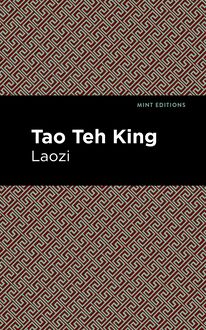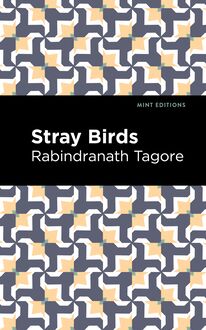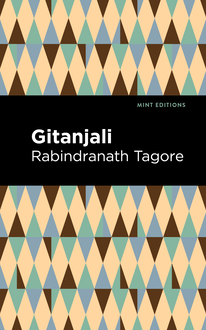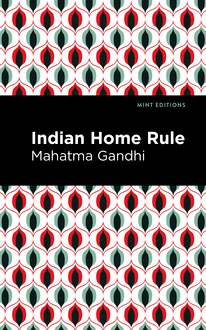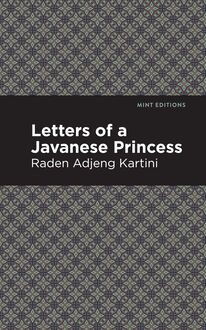-
 Univers
Univers
-
 Ebooks
Ebooks
-
 Livres audio
Livres audio
-
 Presse
Presse
-
 Podcasts
Podcasts
-
 BD
BD
-
 Documents
Documents
-
- Cours
- Révisions
- Ressources pédagogiques
- Sciences de l’éducation
- Manuels scolaires
- Langues
- Travaux de classe
- Annales de BEP
- Etudes supérieures
- Maternelle et primaire
- Fiches de lecture
- Orientation scolaire
- Méthodologie
- Corrigés de devoir
- Annales d’examens et concours
- Annales du bac
- Annales du brevet
- Rapports de stage
La lecture à portée de main
Vous pourrez modifier la taille du texte de cet ouvrage
Découvre YouScribe en t'inscrivant gratuitement
Je m'inscrisDécouvre YouScribe en t'inscrivant gratuitement
Je m'inscrisEn savoir plus
Vous pourrez modifier la taille du texte de cet ouvrage
En savoir plus

Description
Kamala: A Story of Hindu Life is a classic novel of Indian literature which provides an early feminist perspective on issues of religion, class, and gender in nineteenth century India.
Written in beautiful, meditative prose, Kamala: A Story of Hindu Life is the story of a young girl whose idyllic youth as the daughter of a Hindu priest ends with her marriage to a cruel husband. Treated like property by his family, belittled for her education and independent streak, Kamala soon dreams of escaping married life through divorce, risking disgrace for a chance at lasting happiness.
Incorporating the author’s perspective as a woman from a family of Christian converts, Kamala: A Story of Hindu Life is a powerful work of fiction by a pioneering figure in Indian literature. With a beautifully designed cover and professionally typeset manuscript, this edition of Krupabai Satthianadhan’s Kamala: A Story of Hindu Life is part of the Mint Editions collection reimagined for modern readers.
Sujets
Informations
| Publié par | Mint Editions |
| Date de parution | 03 août 2021 |
| Nombre de lectures | 0 |
| EAN13 | 9781513217574 |
| Langue | English |
| Poids de l'ouvrage | 1 Mo |
Informations légales : prix de location à la page 0,0450€. Cette information est donnée uniquement à titre indicatif conformément à la législation en vigueur.
Extrait
Kamala
A Story of Hindu Life
Krupabai Satthianadhan
Kamala: A Story of Hindu Life was first published in 1894.
This edition published by Mint Editions 2021.
ISBN 9781513218571 | E-ISBN 9781513217574
Published by Mint Editions ®
minteditionbooks .com
Publishing Director: Jennifer Newens
Design & Production: Rachel Lopez Metzger
Project Manager: Micaela Clark
Typesetting: Westchester Publishing Services
Her Excellency Lady Wenlock,
T HIS B OOK
is respectfully dedicated,
In accordance with the wishes of the authoress, who felt greatly cheered and encouraged, during the writing of it, by the kind interest manifested in her humble literary efforts, by Her Ladyship.
C ONTENTS M EMOIR OF K RUPABAI S ATTHIANADHAN I II III IV V VI VII VIII IX X XI XII XIII XIV XV XVI XVII XVIII XIX XX
M EMOIR OF K RUPABAI S ATTHIANADHAN
Unlike Torn Dutt of Bengal, who has been called her prototype, the authoress of Kamala lived to see her literary efforts recognised. Now that she has passed away, the Indian Press has expressed the pride which her countrymen feel in her and their sorrow for her early death.
Her writings seem even better known to English than to Indian readers, some of them having been reviewed in flattering terms in the leading English Journals. Her Majesty the Queen Empress had recently accepted a copy of “Saguna” and was graciously pleased to request that any other work by the authoress should be sent to her.
It might almost seem that Krupabai Satthianadhan is already too well known to need that her story should be told except as she herself has told it in “Saguna.” But the final chapters of her life remain to be written, and to judge of her as an authoress and as a woman, we must view her surroundings and the position of her countrywomen when her life began.
Thirty years ago female education had made but little progress in India. Missionaries were still bribing little girls to come to school with offers of food or clothing as they had been obliged to bribe boys a generation before. The great mass of the women of India were completely uneducated, and their position was becoming more and more unenviable as the education of men progressed and the difference between the intellectual status of the men and of the women in a household became greater.
There is a good deal to show that in Vedic times women had lived a free and healthy life, sharing often in the pursuits and interests of their husbands. They seem even to have had some literary skill and to have composed hymns and songs. But the age in which they lived is remote and its history too much mixed up with myth and legend to be trustworthy. Such are the heroines in the Great Indian Epics, the Mahabharata and the Ramayana.
In historic times one or two bright instances like that of the Queen of Beechapore alone occur to relieve the dim twilight in which women—Hindu and Mohammadan alike—lived for many hundreds of years.
But when the work of enlightenment of women consequent on the spread of English education amongst men began, it progressed steadily. For sometime it had been recognised that an extraordinary state of things had been brought about by educating one half of the Indian people and leaving the other half in comparative ignorance. But obstacles such as prejudice on the one hand and timidity on the other, stood in the way.
“To these difficulties may be added the belief, perhaps more widely felt than expressed, that the general education of women means a social revolution the extent of which cannot be foreseen. Native gentlemen, advanced and enlightened enough in ordinary matters, are hampered by the dread that when the women of the country begin to be educated, and to learn independence, harassing times are in store for them. They may thoroughly allow that when the process has been completed, the nation will rise in intelligence, in character, and in all the graces of life. But they are none the less apprehensive that while the process of educatian is going on, while the lessons of emancipation are being learnt and stability has not yet been reached, while, in short, society is slowly struggling to adjust itself to the new conditions, the period of transition will be marked by the loosening of social ties, the upheaval of customary ways, and by prolonged, and severe domestic embarrassment. There is, it is true, an advanced section of the community that is entirely out of sympathy with these views.”
So wrote Sir Alfred Croft, the Director of Public Instruction in Bengal, as late as 1886—when already by the liberal policy of the Government a great deal had been achieved in the advancement of female education.
By degrees, the desire for this education has grown and the demand for it is now gradually coming healthily from within, needing, in the great centres of civilisation at least, much less fostering from without.
It is difficult to realize the beginnings of any great movement, to trace the steps by which it has advanced, and to divest it of features which are the outcome of later times. This difficulty increases when it is a question of comparing such movements in countries and races as different as are those of the east and of the west. Still it is interesting to note how much this work of enlightenment has in common with a movement of a similar kind which began in England about the middle of the last century. An impetus was then given to the education of women in England by such writers as Hannah More, Mary Lamb and Miss Edgeworth, and in India, a century later, by some devoted Missionaries scattered throughout the country, especially by those connected with the Free Church of Scotland. Though in India, women undoubtedly started from a much lower and from an essentially different platform, in both cases this impetus not only stirred the springs of intellectual activity and individual culture, but it has also made women’s hearts beat faster. The severest critics of the “New Woman” must admit that deeper culture has in the long run led to wider sympathies, and that wider sympathies have opened out new and broader fields for philanthropic and useful work,—work which is making the lives of thousands of women happier as well as better. A long list of noble English women rises in one’s mind—names too well known to be repeated here. To one England owes the scientific care of her sick and wounded soldiers: others have toiled for the poor, the ignorant, and the oppressed. In song and in story, women have poured forth the same refrain in wise and true sympathy with all that is highest and best. These were the pioneers; others are following them,—in the main, upwards and onwards, though a few may fail and some may have brought ridicule on themselves, and some have not been “loveable though they deserved to be honored and thankfully remembered.”
India too has had her pioneers; alas! her martyrs also in the cause of women’s education and enlightenment. The feverish thirst for learning and for expression which has seized upon some of her most gifted daughters has more than once led to failing health and even to early death. Superstitious and ignorant people are ever ready to “point a moral and adorn a tale” with the story of their mistaken ardour, and to quote them as proving that, in India at least, women are incapable of bearing any prolonged mental strain.
The history of these women is intensely pathetic, and Lady Dufferin has well said in her Introduction to “Sketches of some Distinguished Indian women,” by Mrs. E. F. Chapman, “One might perhaps have feared that women who had had to break the hard and fast rules of caste and custom would have lost their more loveable characteristic in the struggle; but one rises from the perusal of their biographies with as much affection for the woman as admiration for the student.”
This is indeed most true. Indian women with sweet reasonableness seem to have avoided the especial failings of pioneers. Still the women whom Mrs. Chapman has selected for her sketches are one and all instances of how much there is in common in the waves of thought which have stirred the women of the East and the women of the West. Rather is it not one and the same wave—a wave of hopeful unrest, of eager longing for truth and of unselfish enthusiasm. Every one of the names which stand out conspicuously among the women of India are the names of those whose dearest wish has been or still is to serve their fellow country-women. They are all, whether Christians or of other cults, permeated with humanistic and altruistic ideas. One of the earliest to be affected by this feeling was Toru Dutt, the gifted poetess. She, like many other Hindu ladies, owed much to her mother. “In every case,” as Mrs. Chapman observes, “the work of education and enlightenment has been begun in the previous generation.” She owed much too to her sojourn in France and in England. But such genius as hers must have found voice in any language and in any land. Some of her sweetest utterances are recollections of stories learnt at her mother’s knee, myths which had lost their religious significance as she had learnt to rest in a purer faith, but which retained for her always their poetic beauty. Writing to a French friend, she says, “Quand j’entends ma m è re chanter le soir l è s vieux chants de notre pays je pleure presque tonjours.” Perhaps, however, the following little serenade is more wonderful than any she has written, when it is remembered that the authoress was not twenty and that she wrote in a foreign language.
Still barred thy doors! The far east glows,
The morning wind blows fresh and free.
Should not the hour that wakes the rose
Awaken also thee!
All look for thee, Love, Light and Song,
Light in the sky deep red above,
Song, in the Lark of pinions strong,
And in my heart, true Love.
Apart we miss our nature’s goal,
Why strive to cheat our destinies?
Was not my love made for thy soul?
Thy
-
 Univers
Univers
-
 Ebooks
Ebooks
-
 Livres audio
Livres audio
-
 Presse
Presse
-
 Podcasts
Podcasts
-
 BD
BD
-
 Documents
Documents
-
Jeunesse
-
Littérature
-
Ressources professionnelles
-
Santé et bien-être
-
Savoirs
-
Education
-
Loisirs et hobbies
-
Art, musique et cinéma
-
Actualité et débat de société
-
Jeunesse
-
Littérature
-
Ressources professionnelles
-
Santé et bien-être
-
Savoirs
-
Education
-
Loisirs et hobbies
-
Art, musique et cinéma
-
Actualité et débat de société
-
Actualités
-
Lifestyle
-
Presse jeunesse
-
Presse professionnelle
-
Pratique
-
Presse sportive
-
Presse internationale
-
Culture & Médias
-
Action et Aventures
-
Science-fiction et Fantasy
-
Société
-
Jeunesse
-
Littérature
-
Ressources professionnelles
-
Santé et bien-être
-
Savoirs
-
Education
-
Loisirs et hobbies
-
Art, musique et cinéma
-
Actualité et débat de société
- Cours
- Révisions
- Ressources pédagogiques
- Sciences de l’éducation
- Manuels scolaires
- Langues
- Travaux de classe
- Annales de BEP
- Etudes supérieures
- Maternelle et primaire
- Fiches de lecture
- Orientation scolaire
- Méthodologie
- Corrigés de devoir
- Annales d’examens et concours
- Annales du bac
- Annales du brevet
- Rapports de stage

